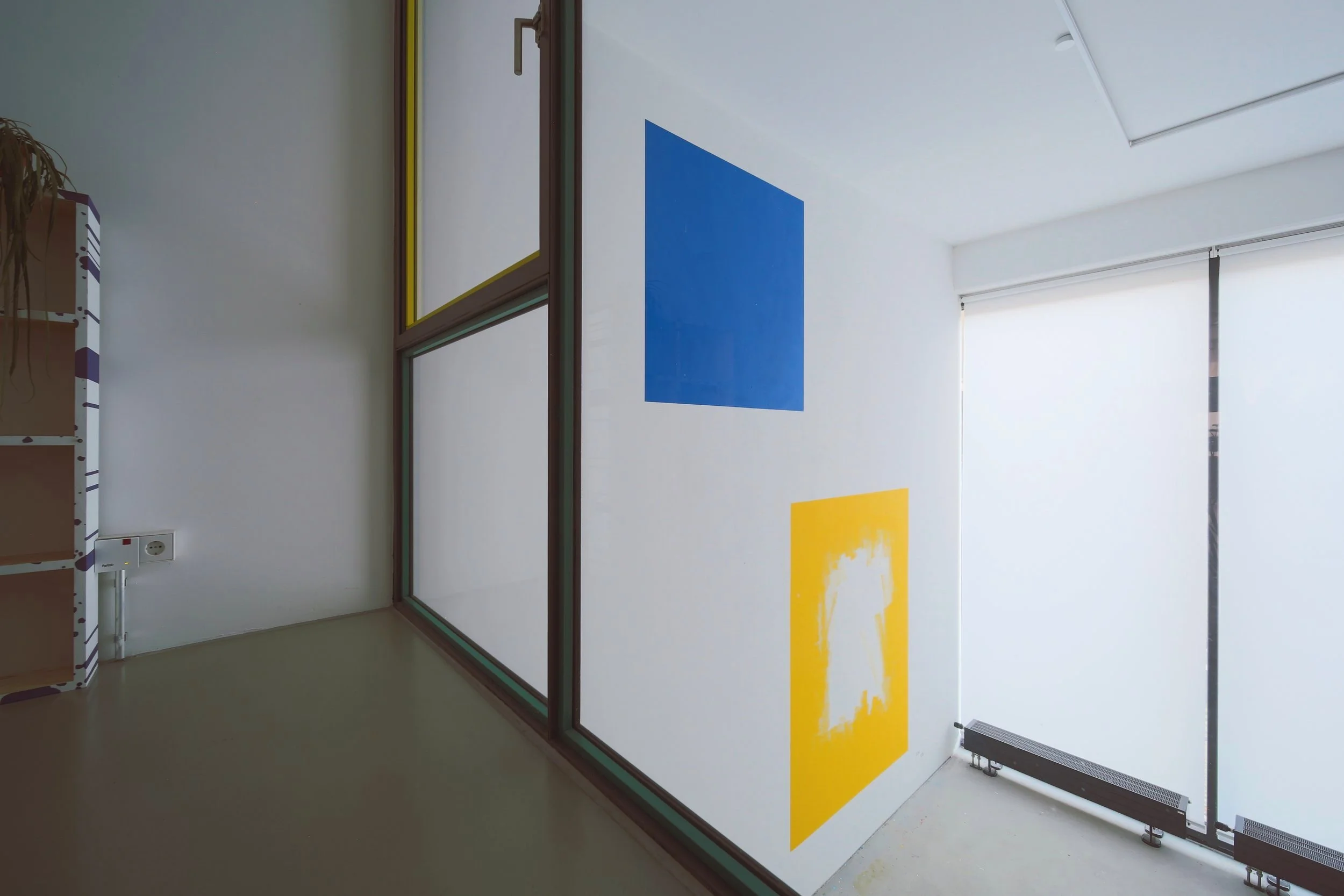More about SET
Tracing Kim’s multidisciplinary practice further, a stack of books arranged on Loom’s small table features the SET publication itself, where Kim’s work from the past ten years is exhibited in one paper-y space. This catalogue arranges all designs and artworks by visual element, eschewing production year, medium, commission type, etc. The content in the book has been translated into more than twenty different spatial iterations since 2015.
LOOM’s current wall and floor has been divided into similar proportions as the catalogue, and the works from its pages have been expanded into a large scale mural; in this act, LOOM becomes a set for a performative activity that responds to and reflects the visual elements of Kim’s work. By expanding into the realm of installation and performance, the artist demonstrates the potentials of a cohesive, unified body of work.








